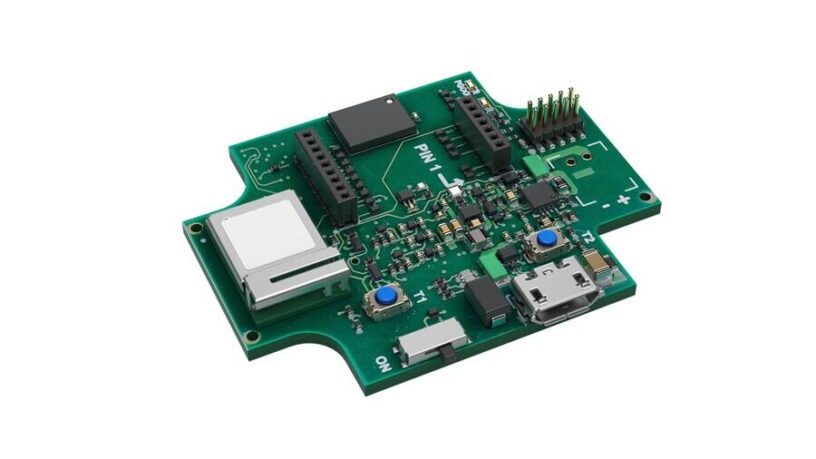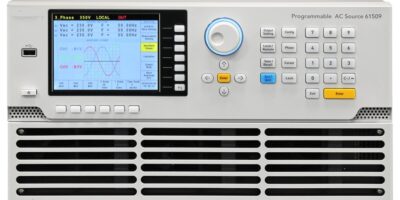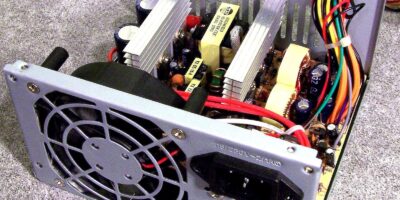Executive Summary
Sensor development boards are integral to the rapid prototyping and development of sensor-based applications across various industries. These boards serve as platforms that allow developers to test, prototype, and integrate sensors into a wide range of products, from consumer electronics to industrial automation systems. This report provides a detailed analysis of the Sensor Development Boards Market, examining its size, growth projections, key trends, competitive landscape, and strategic insights.
Introduction
Definition: Sensor development boards are platforms equipped with sensor modules and interfaces that enable the testing and development of sensor-based applications. They are essential tools for engineers and developers in the fields of electronics, IoT (Internet of Things), automotive, healthcare, and more.
Purpose: The primary purpose of sensor development boards is to accelerate the development process by providing a ready-to-use platform for integrating sensors into various applications. They facilitate rapid prototyping, testing, and iteration, reducing time-to-market for sensor-based products.
Scope: This overview covers the global Sensor Development Boards Market, focusing on market trends, technological advancements, applications, competitive dynamics, and strategic recommendations from 2020 to 2030.
Market Overview
Market Size and Growth: The Sensor Development Boards Market was valued at approximately USD 500 million in 2023, with a projected compound annual growth rate (CAGR) of 9.2% over the next decade. This growth is driven by the increasing adoption of IoT, advancements in sensor technology, and the rising demand for rapid prototyping tools in various industries.
Key Drivers:
- IoT Expansion: The proliferation of IoT devices and applications fuels demand for sensor development boards, which are crucial for developing and testing sensor-integrated systems.
- Technological Advancements: Innovations in sensor technology, including miniaturization and improved sensitivity, enhance the capabilities of sensor development boards.
- Growing R&D Investments: Increased investment in research and development across industries leads to a higher demand for prototyping tools, including sensor development boards.
Challenges:
- Integration Complexity: The complexity of integrating multiple sensors and ensuring interoperability poses a challenge for developers.
- Cost Constraints: High initial costs for advanced sensor development boards can be a barrier for small enterprises and individual developers.
- Technical Expertise: The need for specialized knowledge to effectively use sensor development boards can limit their adoption among non-expert users.
Technological Trends
1. Integration with IoT Platforms: Sensor development boards are increasingly designed to integrate seamlessly with IoT platforms, enabling real-time data collection, analysis, and remote management.
2. Enhanced Connectivity: Advancements in wireless communication technologies, such as Wi-Fi, Bluetooth, and LoRa, enhance the connectivity options for sensor development boards, facilitating their use in diverse environments and applications.
3. Miniaturization and Power Efficiency: Ongoing efforts in miniaturizing sensors and optimizing power consumption are leading to more compact and energy-efficient sensor development boards. This trend supports the development of portable and wearable sensor-based devices.
4. Modular and Open-Source Designs: The rise of modular and open-source sensor development boards enables greater flexibility and customization for developers. Open-source platforms like Arduino and Raspberry Pi are popular choices, offering extensive community support and a wide range of compatible sensors.
5. Integration of AI and Machine Learning: Sensor development boards are increasingly incorporating AI and machine learning capabilities to enable advanced data processing and decision-making. This integration supports applications in predictive maintenance, anomaly detection, and smart systems.
Receive the FREE Sample Report of Sensor Development Boards Market Research Insights @ https://stringentdatalytics.com/sample-request/sensor-development-boards-market/10560/
Market Segmentations:
Global Sensor Development Boards Market: By Company
• STMicroelectronics
• Analog Devices
• Silicon Labs
• Texas Instruments (Ti)
• Cypress Semiconductor
• TE Connectivity
• Dialog Semiconductor
• NXP Semiconductors
• SparkFun Electronics
• Maxim Integrated
• Sensirion
Global Sensor Development Boards Market: By Type
• Adapter Board
• Demonstration Board
• Evaluation Board
• Add-On Board
• Breakout Board
Global Sensor Development Boards Market: By Application
• Accelerometers
• Gyroscopes
• Temperature Sensors
• Pressure Sensors
• Other
By End-User:
- Individual Developers: Hobbyists and independent developers working on personal or small-scale projects.
- Small and Medium Enterprises (SMEs): Companies developing sensor-based solutions for various markets.
- Large Enterprises: Major corporations investing in sensor technology for large-scale applications and products.
- Academic and Research Institutions: Universities and research centers using development boards for educational and research purposes.
Regional Analysis of Global Sensor Development Boards Market
All the regional segmentation has been studied based on recent and future trends, and the market is forecasted throughout the prediction period. The countries covered in the regional analysis of the Global Sensor Development Boards market report are U.S., Canada, and Mexico in North America, Germany, France, U.K., Russia, Italy, Spain, Turkey, Netherlands, Switzerland, Belgium, and Rest of Europe in Europe, Singapore, Malaysia, Australia, Thailand, Indonesia, Philippines, China, Japan, India, South Korea, Rest of Asia-Pacific (APAC) in the Asia-Pacific (APAC), Saudi Arabia, U.A.E, South Africa, Egypt, Israel, Rest of Middle East and Africa (MEA) as a part of Middle East and Africa (MEA), and Argentina, Brazil, and Rest of South America as part of South America.
Click to Purchase Sensor Development Boards Market Research Report @ https://stringentdatalytics.com/purchase/sensor-development-boards-market/10560/
Competitive Landscape
Major Players:
- STMicroelectronics: Known for its comprehensive range of sensor development boards and kits, supporting various sensor types and applications.
- Texas Instruments: Offers sensor development boards with a focus on integration with their microcontrollers and wireless communication modules.
- NXP Semiconductors: Provides development boards designed for automotive and industrial applications, featuring robust sensor integration.
- Analog Devices: Specializes in high-performance sensor development boards with advanced signal processing capabilities.
- Arduino: Popular for its open-source development boards that support a wide range of sensors and are widely used by hobbyists and educational institutions.
Market Share: The market is competitive, with major players holding significant shares due to their established product lines, technological expertise, and global distribution networks. The top five companies account for approximately 55% of the market share.
Competitive Strategies:
- Product Innovation: Continuous development of new sensor development boards with enhanced features and capabilities.
- Strategic Partnerships: Collaborations with sensor manufacturers and IoT platform providers to offer integrated solutions.
- Customer Support: Providing extensive documentation, tutorials, and technical support to assist developers in using sensor development boards effectively.
Applications and Use Cases
1. Consumer Electronics:
- Smart Home Devices: Development of sensors for smart thermostats, security systems, and home automation.
- Wearables: Prototyping sensors for fitness trackers, smartwatches, and health monitoring devices.
2. Automotive:
- ADAS Development: Integration of sensors for lane departure warning, adaptive cruise control, and collision avoidance.
- Vehicle Diagnostics: Development of sensor-based systems for real-time vehicle health monitoring and diagnostics.
3. Industrial Automation:
- Machinery Monitoring: Prototyping sensors for monitoring machinery performance, predicting maintenance needs, and optimizing operations.
- Process Control: Testing sensors for controlling and automating industrial processes, ensuring efficiency and safety.
4. Healthcare:
- Medical Devices: Development of sensors for wearable health monitors, diagnostic tools, and patient monitoring systems.
- Telemedicine: Prototyping sensors for remote patient monitoring and telemedicine applications, enabling real-time health data collection.
5. Environmental Monitoring:
- Air Quality Monitoring: Development of sensors for detecting pollutants and monitoring air quality in urban and industrial areas.
- Water Quality Monitoring: Prototyping sensors for assessing water quality in rivers, lakes, and drinking water supplies.
Market Opportunities
1. Expansion into Emerging Markets: Growing demand for sensor-based solutions in emerging markets, particularly in Asia-Pacific and Latin America, presents significant opportunities for market expansion. Increasing industrialization and urbanization drive the need for advanced sensor technology in these regions.
2. Development of Industry-Specific Boards: Customizing sensor development boards for specific industries, such as automotive, healthcare, and industrial automation, can address unique requirements and enhance market penetration. Industry-specific solutions offer tailored features and capabilities, meeting the precise needs of different sectors.
3. Growth in Educational and DIY Segments: The rising popularity of STEM (Science, Technology, Engineering, and Mathematics) education and the DIY (Do It Yourself) movement creates opportunities for sensor development boards designed for educational purposes and hobbyist projects. These boards support hands-on learning and innovation among students and enthusiasts.
4. Integration with AI and Advanced Analytics: The integration of AI and advanced analytics with sensor development boards can unlock new applications and enhance the capabilities of sensor-based systems. This trend supports the development of smart systems capable of real-time decision-making and predictive analysis.
5. Focus on Sustainability and Green Technologies: The growing emphasis on sustainability and green technologies drives the development of sensor development boards for environmental monitoring and energy-efficient systems. These boards support applications in renewable energy, waste management, and sustainable agriculture.
Challenges and Risks
1. Rapid Technological Change: The fast-paced nature of technological advancements in sensors and related technologies can lead to rapid obsolescence of sensor development boards. Keeping up with these changes requires continuous innovation and updates to product offerings.
2. Intellectual Property and Patent Issues: The development of new sensor technologies and integration methods can lead to intellectual property and patent disputes. Ensuring compliance with existing patents and protecting proprietary technology is crucial to avoid legal challenges.
3. Supply Chain Disruptions: Supply chain disruptions, such as shortages of critical components or geopolitical tensions, can impact the availability and cost of sensor development boards. Maintaining a resilient supply chain and diversifying sourcing strategies are essential to mitigate these risks.
4. Regulatory Compliance: Adhering to regulatory standards and requirements for sensor-based systems, particularly in industries such as healthcare and automotive, can pose challenges. Ensuring compliance with safety
About Stringent Datalytics
Stringent Datalytics offers both custom and syndicated market research reports. Custom market research reports are tailored to a specific client’s needs and requirements. These reports provide unique insights into a particular industry or market segment and can help businesses make informed decisions about their strategies and operations.
Syndicated market research reports, on the other hand, are pre-existing reports that are available for purchase by multiple clients. These reports are often produced on a regular basis, such as annually or quarterly, and cover a broad range of industries and market segments. Syndicated reports provide clients with insights into industry trends, market sizes, and competitive landscapes. By offering both custom and syndicated reports, Stringent Datalytics can provide clients with a range of market research solutions that can be customized to their specific needs.
Reach US
Stringent Datalytics
+1 346 666 6655
Social Channels:




Leave a Reply